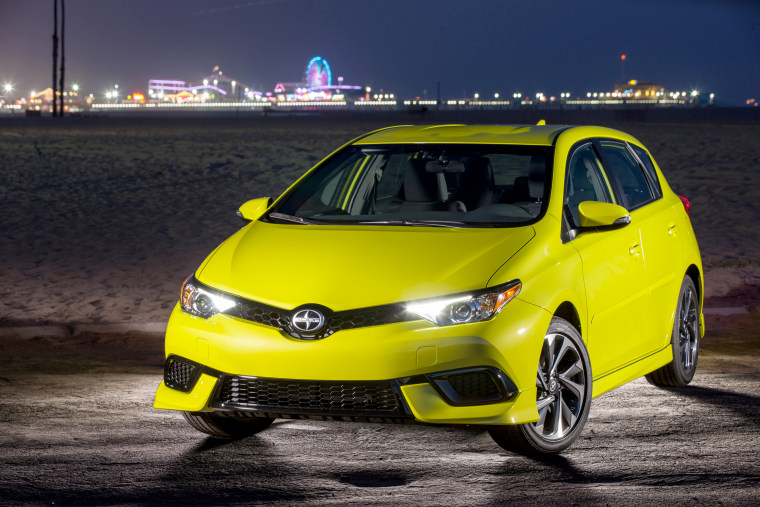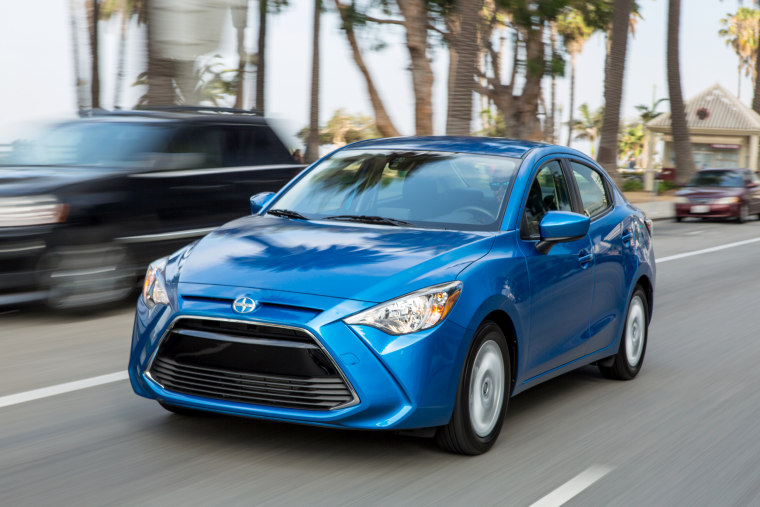Once one of the hottest, hippest brands on the U.S. automotive market, the Scion lost its way after an initial run of success. Now the Toyota sub-brand is hoping to resume its trendsetting ways with the launch of two new models.
And, in an unusual turnabout, Toyota is turning to little Mazda to produce the iM hatchback and iA sedan, which will be available next month.
Launched 12 years ago, the Scion was designed to reach young carbuyers who were largely steering clear of Toyota’s showrooms. And, with quirky models like the boxy xB backed by creative – if sometimes dark – marketing campaigns, the brand became an almost instant success, hitting a 2006 sales peak of 173,000 vehicles.

But like a parent who tries to pick up on the latest teenage slang, Scion soon seemed to lose the hip audience it sought. The second-generation xB, specifically designed for the U.S. market, was a spectacular flop and, by 2014, sales plunged to a mere 58,000. The slide has continued this year. Despite the ongoing revival of the U.S. new car market, Scion sales dipped another 18.6 percent through July.
But General Manager Doug Murtha said this week that Scion is “taking a look at everything we’re doing as a brand,” and predicted success for its next generation of vehicles at a media preview in Grand Rapids, Michigan.
In addition to exploring a wide range of future product possibilities, Toyota’s youth division is considering a major shift in the way it sells cars. Its new “Pure Process Plus” portal aims to slash the time it takes to buy a car by taking much of that process online. For about half of the shoppers who have tried a prototype version it took less than two hours to finalize a deal -- less than half the time normally required to buy a new vehicle, according to Murtha.

About 60 of its dealers have already signed up and more are expected to participate in the program going forward, he said.
While turning to the Internet should attract younger, tech-savvy buyers, Scion officials acknowledge that the product will need to get those shoppers to complete the purchase. And the Toyota sub-brand has missed the mark with a number of recent models, including a second-generation xB that failed to achieve the cult status of the original. As a result, fully half of the products in the Scion showroom last year will be dropped for 2016.
They’ll be replaced by two promising offerings: the iM hatchback and Scion’s first-ever sedan, the iA. In an unusual move, the maker turned to Mazda for that edgy four-door model. The Scion iA is a thinly restyled version of the Mazda2 and the two will be produced side-by-side at Mazda’s new plant in Mexico.
Tesla Shows Off Scary Snake-Like Automatic Charger
In its early years, Scion strictly limited itself to just three models at a time. That could jump to six going forward, but with less emphasis on what Murtha said were “vehicles very off-the-reservation.”
Among other things, Scion is looking to add a crossover-utility vehicle, possibly even a small pickup truck along the lines of the A-BAT concept vehicle it showed a few years back. And Murtha says the brand could use all-wheel-drive technology to “increase our share in some colder climates.”
When Scion first debuted, the brand took an aggressive approach to marketing. It sponsored a number of alternative music artists and ran a series of dark and edgy ads that seemed to connect with the mood of the times.
But the brand was slammed not only by product mistakes but also by a recession that was particularly hard on younger consumers, who suffered from high unemployment rates and heavy student debt. With the economy recovering, many of those buyers are just coming back into the new car market, and they have a much more upbeat attitude than those who turned to Scion in its early years, Murtha said.
To connect with those consumers, Scion will shift to a more regional – and more upbeat – marketing approach.
It’s also downsizing its aspirations. “To be sustainable and viable as a brand, we need to be selling north of 100,000 vehicles,” said Murtha, quickly adding, “We’re never going to push this thing above 200,000.”
Considering parent Toyota routinely sells over 400,000 Camry sedans each year, that might not seem like it’s worth the effort. But Scion’s parent sees the youth brand as critical. Toyota built itself into a powerhouse with the Baby Boom generation and knows that it needs to tap a new generation of younger buyers if it’s going to retain its momentum in the years ahead.
More from The Detroit Bureau